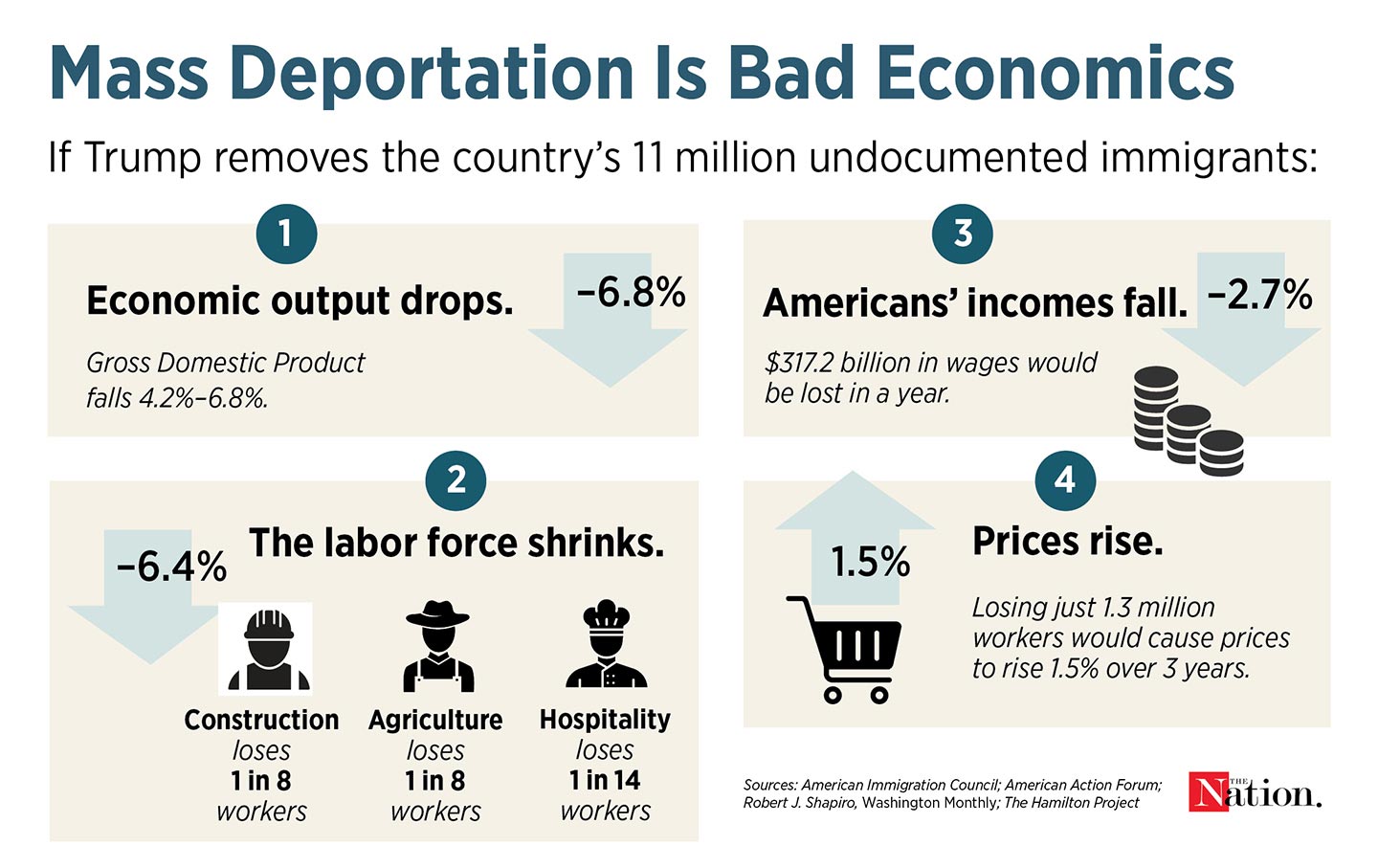Ballet Dancers’ Next Move: Union Organizing
Contract negotiations have brought higher pensions, mandated rest times, and increased wages for a job that requires intense schedules and years of training.

American Ballet Theatre Corps de Ballet dancers perform during a dress rehearsal.
(Timothy Clary / Getty)
Lauren Post, like most professional ballet dancers, began her career as a toddler. At 13, she left for dance boarding school, and then worked professionally for 18 years with the American Ballet Theater (ABT) and Atlanta Ballet. With an “all-consuming” career, she said, thinking about life outside of ballet wasn’t ever considered until it was time to leave. However, once it was, Post was left without help or support from the company with which she had spent her life.
Now, facing the inevitable early retirement for dancers around age 35 due to physical constraints, she’s facing a labor market that doesn’t recognize the value of dancers without formal educational backgrounds.
“Dancers are some of the hardest workers that you can meet, and anyone I know who’s in a management position—who has hired dancers in the past—raves about how focused and hardworking former dancers are and willing to go above and beyond,” Post said. Now director of the Minnesota Dance School, Post received mentorship from Second Act, a nonprofit organization dedicated to career transition, which was fortunate. because ABT lacked the necessary job-retraining support.
Alexandra Basmagy, another former ballet dancer with ABT who retired last spring after more than a decade, has seen increased advocacy from younger dancers pushing for better conditions in a constant, physical job in her role with the union negotiation committee. She attributes this to more value placed on work-life balance following the pandemic. She is also seeing a broader cultural shift in the next generation of dance, with newer members starting to think sooner about end-of-career support.
Like many industries, ballet has seen a rise in unionization over the past five years—especially after the pandemic, when ballet dancers faced unprecedented job insecurity. According to DanceUSA, the unemployment rate for dancers more than quadrupled between 2019 and 2020 as consumer spending on admissions dropped by more than $30 billion. In ballet, over the last eight years, 11 dance companies, one touring production, and the faculty at the School of American Ballet have unionized for the first time.
Their national labor union, the American Guild of Musical Artists, has built on this momentum by connecting dance companies to help learn from each other. Contract negotiations have brought higher pension contributions, mandated rest times, and living wages for a job that requires years of training. Transition support, such as mentors and internships, are not yet in these contracts, but AGMA often connects dancers with outside nonprofits such as the Entertainment Community Fund, formerly known as the Actors Fund, which provides career counseling and grants. The culture in the dance studio has also seen improvements, such as ending language that implies power imbalances between dancers and those formerly called “ballet masters.”
Griff Braun, AGMA’s National organizing director and a former ballet dancer, has seen younger dancers passionate about a good career leading that push. “Forming a union is an act of love in a sense,” Braun said. “If you hated the place you worked you would just leave. It’s people who want to stay that want to make it better who form a union. I think that’s an important thing for people to keep in mind and I wish some of our employers would recognize that sooner that these artists are doing this not to hurt the company but to help the company.”
In 2005, a strike during the primary revenue-earning show, The Nutcracker, almost closed the Washington Ballet company. When dancers rejected a contract proposal, all performances were canceled. It lost about a million dollars in one week, which for a medium-sized company could have been fatal. Ticket sales were estimated to be 64 percent of annual revenue, the president of the ballet’s board of directors told The Washington Post. During the time, dancers said rehearsals for The Nutcracker were grueling and led to injuries. An agreement wasn’t reached to end the strike until the following March.
A Washington Ballet tour was also canceled earlier that year, prompting an Unfair Labor Practice charge against the company for bad-faith negotiating. Another successful charge against the Washington Ballet over two dancers being dismissed resulted in a complaint from the NLRB.
While the strike was painful, Jeffery Edwards believes it was a necessary step for the company to continue. Edwards is a dance professor at The Juilliard School who moved to New York at 14 to enter ballet school and danced for almost 20 years. At Washington, ballet dancers pushed for living wages and adequate rest times to avoid injury, but more issues remain. “I don’t think the conditions or the job security of dancers have improved from what I can see,” said Edwards, who at the time of the strike was the company’s Associate Artistic Director. “You look at some of the best and the most prestigious companies in the US, like American Ballet Theater, New York City Ballet. Even the top dancers are still collecting unemployment for many weeks of their contract year.”
Suzan Sittig, who was a dancer with the Vienna State Opera Ballet for 10 years, says that her years with the company were the best of her life. She began when she was just 4 years old, and tried to avoid thoughts of leaving ballet until she faced injury. During rehabilitation, she started to explore other interests. “It wasn’t just me. I thought I was the only one too scared to make a move. But it’s universal,” Sittig said. “It is terrifying to step out of a world that you know so well, and that is so linear in a way, you know what to do.”
Sittig hopes there will be more organizations set up to help provide transition support, and balance encouraged for younger dancers. In Europe, compensation is typically more stable with fixed salaries, so barriers to transition come from leaving financial stability for a new career.
“I don’t want to just live and breathe ballet,” said Sittig, who now works as a flight attendant while pursuing a master’s degree in dance science. “I want to enjoy my other interests. I always used to feel guilty. I felt like I was cheating on my dreams of becoming a dancer if I thought about other things.”
Basmagy is currently taking a break from working after her retirement, but felt her peers were left to their own devices and relying on outside organizations like Second Act to find job support. In the past, she said, older dancers worked to educate newer ones about the importance of planning for transition early, but now younger dancers are increasingly interested in those discussions and advocating for themselves during meetings and negotiations.
Edwards hopes for more support and open discussion around transitioning, and how employees of an extremely competitive industry are treated in their short careers. Outside of a contract, Edwards called for conversations about how dancers are treated in practice rooms. “There are a lot of questions of dance culture, and how we are in the room and how we show up and questions of language and tone, and boundaries. All of these things can be part of the conversation, but you can’t expect a contract to solve all of that,” he said.
In the future, Basmagy hopes to see increased pension contributions for the younger dancers she helped to advocate for during her time on the union committee. After the most recent round of ABT negotiations, pension contributions will rise to 5 percent in three years, which she says is still low compared to similar companies’: New York City ballet contributes 9 percent and San Francisco Ballet contributes 11 percent.
Popular
“swipe left below to view more authors”Swipe →But Basmagy is encouraged by the younger generation’s interest in discussing power dynamics and fairness. “People want to come in feeling like an adult and a respected artist, because it is a job,” she said. “We do love it, but we also have to make a living off it. Culturally, there’s been a big shift in the ballet world. People don’t want to just be the little dancing puppets that are told what to do and how to do it. We want to make sure that we have a voice, and what we’re doing is correct and safe, and in a pleasant environment for everybody.”
Support independent journalism that exposes oligarchs and profiteers
Donald Trump’s cruel and chaotic second term is just getting started. In his first month back in office, Trump and his lackey Elon Musk (or is it the other way around?) have proven that nothing is safe from sacrifice at the altar of unchecked power and riches.
Only robust independent journalism can cut through the noise and offer clear-eyed reporting and analysis based on principle and conscience. That’s what The Nation has done for 160 years and that’s what we’re doing now.
Our independent journalism doesn’t allow injustice to go unnoticed or unchallenged—nor will we abandon hope for a better world. Our writers, editors, and fact-checkers are working relentlessly to keep you informed and empowered when so much of the media fails to do so out of credulity, fear, or fealty.
The Nation has seen unprecedented times before. We draw strength and guidance from our history of principled progressive journalism in times of crisis, and we are committed to continuing this legacy today.
We’re aiming to raise $25,000 during our Spring Fundraising Campaign to ensure that we have the resources to expose the oligarchs and profiteers attempting to loot our republic. Stand for bold independent journalism and donate to support The Nation today.
Onward,
Katrina vanden Heuvel
Editorial Director and Publisher, The Nation
More from The Nation

How Trump Plans to Manipulate US Economic Data to Gaslight the Public How Trump Plans to Manipulate US Economic Data to Gaslight the Public
The president and his GOP cronies want to tamper with government statistics and use deceptive budget gimmicks to lie about the impact of their massive tax and budget cuts.

To Defeat the Far Right, We Must Adopt an Anti-Fascist Economic Policy To Defeat the Far Right, We Must Adopt an Anti-Fascist Economic Policy
Opposition to the status quo must not be monopolized by the right-wing extremist visions of parties like Alternative für Deutschland.

Trump’s Greenland Obsession Is All About China Trump’s Greenland Obsession Is All About China
Greenland and its resources are merely the latest potential casualty of Trump’s quest for global domination and his fear of China’s economic power.

Trump Is Fumbling the NLRB. But Amazon Workers Can Still Build Momentum. Trump Is Fumbling the NLRB. But Amazon Workers Can Still Build Momentum.
Amazon Teamsters’ December strike was the biggest in the company’s history. What does their future look like under Trump 2.0?

Welcome to the New Military-Industrial Complex Welcome to the New Military-Industrial Complex
An assortment of new firms, born in Silicon Valley or incorporating its disruptive ethos, have begun to challenge the older ones for access to lucrative Pentagon awards.

Mass Deportations Aren’t Just Evil. They’re Also Terrible Economics. Mass Deportations Aren’t Just Evil. They’re Also Terrible Economics.
Immigrants don’t steal citizens’ jobs and wages. They grow the economy for all.


